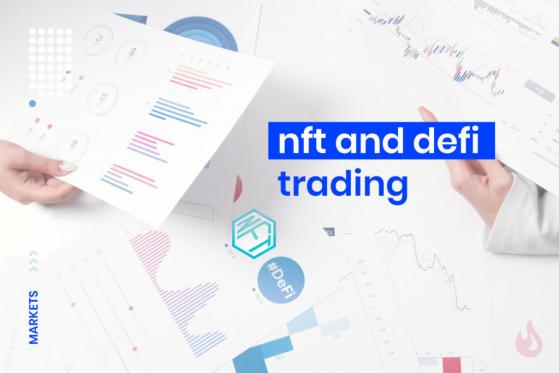Access to trading platforms and the growth of the NFT marketplace have created a new class of traders. As data indicates, the number of millennials and Gen Zers trading has increased significantly during the COVID pandemic through easy-to-access platforms such as Robinhood and DeFi for the cryptocurrency market.
“Access to the market has never been easier,” says director of E*Trade, Chris Larkin. Users only need some cash and a smartphone to start trading. Therefore, the number of retail investors has increased drastically in the crypto space.
The growth of DeFi and the emergence of NFTs in 2021 have reshaped millennials’ view of the store of value found in digital assets. As highlighted by Justin Sun, founder of TRON, researching and trading is done from the comfort of one’s home and doesn’t require extensive knowledge. Millennials and Gen Z are the digital natives of the 21st century. According to a study in 2020, 45% of crypto investors are younger than 30.
DeFi And NFTs Are The Catalysts
The growth of DeFi has been a long time coming. Many associate the 2020 DeFi craze with the 2018 ICO bubble. While ICOs were mainly based on speculation, the upcoming DeFi bubble differs as the current platforms are fully operational. Data from DeFi Pulse shows that over $44 billion are locked up in liquidity pools across platforms. Although ICOs are regarded as a bubble, they’ve operated as a launchpad for the current decentralized financial system.
DeFi is challenging the traditional financial system as it has been assimilated by a target market that no longer trusts regulatory banking systems. DeFi is permissionless; thus, it creates a more accessible entry point, which doesn’t require KYC, and security in the network is facilitated by blockchain technology. Regular exchanges that first transacted crypto with fiat collateral have operated to promote cryptocurrency purchases. However, as new protocols have been integrated across blockchains, traders no longer require a centralized entity to validate their transactions.
With cross-platform integrations, DeFi will bypass the current cryptocurrency trading market and decrease fees. Being built on the Ethereum network means traders need to pay for gas to use services such as Uniswap. At the time of writing, gas prices are 190 gwei per transaction, and this can create segmentation between smaller traders and higher capital traders.
The tokenization of digital assets through NFTs has led to a new form of investment, which seemed impossible in the past. The ERC-271 is a non-fungible token standard used to create one-of-a-kind collectibles that can be transacted on NFT marketplaces. Every industry is being tokenized, not only the art industry, which has seen colossal sales. For example, Justin Sun acquired “Ocean Frost” from renowned NFT artist Beeple for $6 million.
More transactions are being made in 2021 using NFTs as price speculation increases. Also, existing blockchains are jumping on the bandwagon to create marketplaces to facilitate the sale and minting of NFTs.
The NFT craze is showcasing new traders’ adaptability and the younger generation’s ability to make their own rules regarding what’s worth investing in. Instead of the old ways of trading in a room full of people, collectors or traders can simply send a token to one another as part of the transactions. And that is a mind-blowing development considering how trading has traditionally operated.
The growth of blockchain integration is the primary catalyst for changing trading behavior. Social media works to reinforce traders’ beliefs and normalize this new form of trading. Furthermore, users can now own what they once just appreciated on social media, and they can invest in a digital asset which in time could increase in value. The best case in point is Beeple, when a speculator flipped a video from $65,000 to $6.6 million after only a few months.
On the Flipside
- Decentralized finance requires KYC and anti-money laundering laws to progress a level up toward institutional investors.
- The ease through which transactions occur can create havoc in the market if investors are not aware of the risks they are taking.
- Large financial institutions can still manipulate a highly unregulated market.
- NFTs’ prices are highly speculative, and investors might realize their investment was not worth it a year from now.
Cryptocurrency Has Changed Trading For Good
Trading is no longer what it used to be. It no longer requires a centralized institution to dictate when you can purchase, what is worth buying, and what is worth selling. The art industry has managed to digitize artwork and open a new market that previously was nonexistent. Blockchain, in that regard, facilitated the shift in perception through smart contract integration and one-of-a-kind tokens.
DeFi and NFTs are different in the way they operate, but they have the same principles that resonate with modern investors. Both open the possibility of a new gold rush, where traders can speculate on price and generate profit – or loss. The trend of how investors are perceived by society is yet to change. While some Wall Street investors still believe traders need to have a suit and tie and know microeconomics and the financial market, DeFi and NFTs are proving them wrong. And this can be worrisome for those so embedded in traditional financial institutions as it creates a new economy often overlooked by regular investors.
